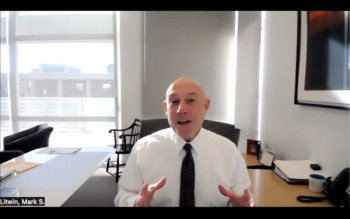
First study portrays urology resident clinical experience in the United States

A recent study published in Urology described how American Urological Association–accredited urological residency training programs are organized in terms of clinical exposure and teaching of their residents.
Everybody knows a surgical resident’s enthusiasm to be in the operating room (OR), but how about their clinical training? Clinical exposure is as essential as surgical skills training, and a recent study published in Urology (Gold Journal) had the role of describing how American Urology residency programs are organized in terms of clinical exposure and teaching of their residents.
The former KU urology resident Dr. Campbell and his co-workers1 developed an online survey delivered to program directors (PD) to try to answer those questions, with a response rate of 45% (60/134). Besides basic program information, such as the total number of attendings, fellows, residents, and residents accepted per year, the survey contained specific questions about clinical experience, including the type of hospitals, clinical education model, time spent and barriers to teaching in clinic, and the PD’s perspective on clinical education improvement.
In regard to clinic environment, the authors found that most of the residents participate in clinics at most types of hospitals, including Children’s hospitals (85%) and University Hospitals (93%), but only 38% of the programs offered County/Indigent Hospitals for clinical training.
The researchers also explored the model of clinical education, encompassing: 1) the consistent model, in which there is a mandatory clinic time, regardless of resident level. 2) the hierarchical model, in which junior residents spend most of the time in clinic, while senior residents are in the OR. 3) the mentorship model, with residents working with one attending in clinic and the OR for an extended period. 4) the resident clinic model, in which residents run the clinic with supervision.
They found that 62% of programs (37/60) employed the consistent model for clinical training, and 13% (8/60) used the mentorship model. The authors reference the mentorship model to be the closest one to post-residency practice, which allows the resident to meet a patient in the clinic, develop a treatment plan, and see the results. Interestingly, only 10% (6/60) used the hierarchical model, which features have been associated with negative impacts of lowering training satisfaction, amplifying stress, fatigue, and burnout. Finally, 8% (5/60) used the resident clinic model, offering a higher level of autonomy but potentially limiting interaction with attendings, which depends on their level of involvement.
Additionally, the authors found residents spent an average of 2.6 days in clinic per week, with 22% of the programs (13/60) having a “clinic-only” rotation, lasting 1 to 6 months.
The authors explored the barriers to teaching in clinic, and as expected, 70% of PDs (42/60) mentioned “time constraint and schedule” to be the biggest hurdle. Furthermore, less than half of PDs (40%; 24/60) felt that residents see clinic as valuable for their training and only 30% (18/60) felt that residents see clinic time as a necessary exercise. The authors stated that one PD commented, “It is difficult to impress the need for clinic in the learning process. Then [the residents] go out into practice and contact us for information they would have learned had they attended clinic without kicking and screaming. All they want to do is go to the OR.”
The study also investigated what specific steps would be necessary to improve the clinical learning environment, and “multiple program directors emphasized the importance of regular clinic attendance and six programs specifically reported recently adding some type of rotation with regular clinic attendance for residents”.
Furthermore, although currently, the electronic medical record (EMR) is a necessary burden for the majority of programs, most PDs believe it could be a tool for clinical learning and tracking residents time and exposure. The authors also explored the thoughts of having a scribe to allow more time for specific clinic education, and one program director did comment, “Dedicated scribes help tremendously by offloading the EMR duties and allowing residents to learn instead of functioning as scribes for faculty.” This was confronted with the fact that only 30% of the responding programs (18/60) had staff using scribes. In addition, a study published in 2021 found that 90% of general surgery residents felt scribes to allow more time for patient care, besides improving their own wellness and perception of surgical education.2
Acknowledging the study’s limitations, the authors conceded that although a response rate of 45% is considered “relatively high”, it certainly does not represent the whole academic urology. In addition, the surveys’ responses denote only the PDs’ point of view, and residents’ perceptions about how clinical knowledge is taught may be a factor to consider in future studies. Finally, “Potentially the greatest limitation, […], is that true learning in either the clinic or surgical environment requires a resident who consistently remains committed to the training process,” thoughtfully pointed out the authors.
The study concluded that the structure of clinical teaching among American Urology residency programs is highly variable, with directed effort being necessary to improve the residents’ experience and involvement in clinic. It is certainly worth checking out the
References
1.Campbell J, Lee E, Mirza M, et al. First Characterization of Resident Clinical Experience at American Urological Training Prdograms. Urology. 2022;164:63-7.
2.Tohmasi S, Naaseh A, Thompson S, et al. Improved Perceptions of Education and Wellness Among General Surgery Residents and Faculty After the Implementation of Outpatient Scribes. Am Surg. 2021;87(10):1616-20.
Newsletter
Stay current with the latest urology news and practice-changing insights — sign up now for the essential updates every urologist needs.


















